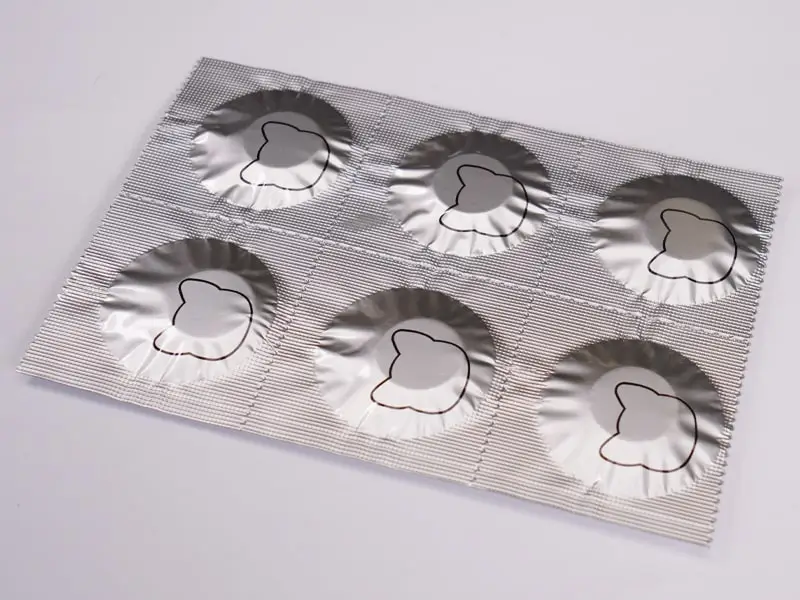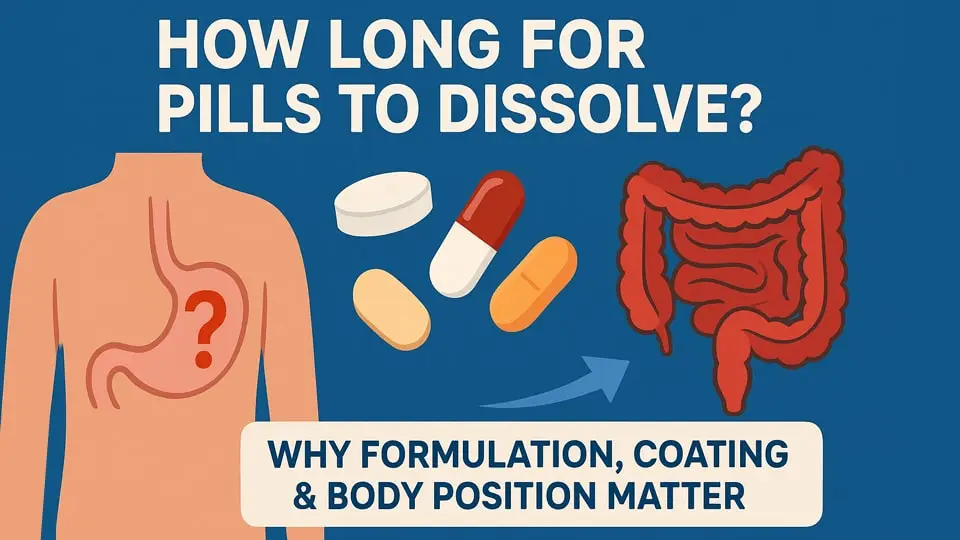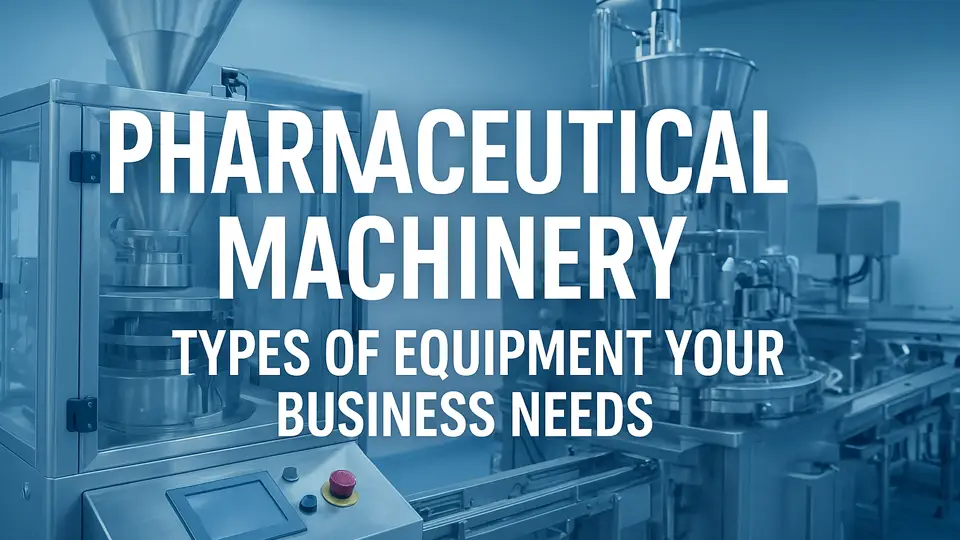
Gói dính vs gói: Hướng dẫn cơ bản về những khác biệt chính
Khám phá sự khác biệt chính giữa gói dạng que và gói dạng gói. Tìm hiểu về thiết kế của họ, sản xuất
Have you ever wondered what makes Alu Alu blister packaging đặc biệt? In simple terms, it’s a type of Gói vỉ where both the cavity (base) and the lid (backing) are made from aluminum-based materials. This “cold-form” design forms drug cavities by stamping a multi-layer aluminum foil into shape without heating, creating an ultra-tight seal. The result is a 100% opaque, metal “cavity-in-aluminum” pack that completely blocks moisture, ánh sáng, oxygen and other contaminants. In other words, an Alu-Alu blister is essentially a mini metal vault for each tablet or capsule.

Unlike a standard PVC blister (clear plastic cavity with aluminum foil lid), an Alu-Alu blister uses a special laminated foil for the forming web and an aluminum foil lidding. A typical foil might be a three-layer laminate (Ví dụ, an oriented nylon layer, a pure aluminum layer, and a heat-seal layer). During production, this foil sheet is pressed (often with forming pins or high-pressure stamping) into blister cavities, no heat applied. After filling with the product, the pack is sealed with an aluminum backing foil (sometimes with a lidding laminate). Because both sides are aluminum-based, this packaging is often called “cold form foil” or Alu-Alu blister packing.
Trong thực tế, Alu-Alu packaging is ideal for pharmaceuticals and sensitive products. It creates a cold-formed blister that provides superior barrier protection against moisture, oxy và ánh sáng. This means the active ingredients inside – whether tablets, capsules or tiny medical devices – stay dry and stable throughout their shelf life. Trong thực tế, leading packaging experts note that Alu-Alu blister packs can virtually eliminate water vapor, ôxy, and light ingress, ensuring drug stability. Ví dụ, one industry source estimates that about 25% of pharmaceuticals (like effervescent or highly potent drugs) need this level of protection.
Key Benefits: Because it’s 100% opaque and metal on all sides, Alu-Alu blister packaging offers nearly hermetic seals. It can extend shelf life significantly and keep drugs potent much longer. The all-aluminum structure is highly tamper-evident and, unlike PVC packs, aluminum is fully recyclable. In a nutshell, Alu-Alu blisters are the “ultimate fortress” for sensitive products – they block out everything that might degrade the contents.

Quá trình sản xuất: Making Alu-Alu blisters requires specialized machines. These cold-forming machines use mechanical presses (or “blister forming stations”) to draw the foil into cavities. The process is slower and more complex than a regular thermoforming line (where plastic is heated). Trong thực tế, high-pressure punches and depth-sensing tools are used to create uniform cavities without tearing the foil. After forming, các sản phẩm (máy tính bảng, viên nang, vân vân.) are placed into the cavities and then sealed with an aluminum lid foil. Because there’s no transparency, visual inspection of fill levels is more challenging, so machines often include X-ray or other inspection steps. Overall, these Alu-Alu blister machines sacrifice speed for maximum protection – typical production is several thousand blisters per hour (often around 10,000–11,000 blisters/hour).
[jl_youtube src=”https://www.youtube.com/embed/MpmvD9hjN60″]

Because of the trade-offs, Alu-Alu blister packs are used when extra protection is absolutely needed. They’re predominantly a pharmaceutical packaging solution. Ví dụ, highly hygroscopic tablets (like effervescent vitamin tablets) or light-sensitive APIs (certain antibiotics, hormones, biotech drugs) are often blistered in Alu-Alu. Stability studies may show that these products degrade rapidly if any moisture or oxygen leaks in, so the Alu-Alu barrier becomes a must.
Tuy nhiên, pharma isn’t the only field. Any medical or consumer product that must stay dry can use Alu-Alu blistering. Some nutraceuticals and supplements (like high-grade vitamins, probiotics or herbal extracts) use Alu-Alu to preserve potency, especially in hot or humid climates. The opaque foil also gives an upscale look that premium health brands like.
High-end cosmetics and personal care often take advantage too. Ví dụ, single-use serums, skin-care patches, or cosmetic powders that must stay sterile can be packed in Alu-Alu blisters. The foil protects against oxidation and also creates a unique, premium feel on the shelf.
Interestingly, even some electronics and chemical products use similar blister packs. Very moisture-sensitive items like lithium batteries, small sensors, or corrosion-sensitive components might be vacuum-formed into foil laminates for shipping. (In these cases, Alu-Alu style blisters aren’t common on retail shelves, but you’ll find aluminum foil trays or blisters protecting precision parts in their industrial packaging.)
Food and Confectionery: In a broad sense, Alu-Alu technology inspires food packaging too. One source notes that items like snack bars, candies or chocolates can be sealed in high-barrier foil blisters. True blister cards aren’t typical for food, but the same idea – a sealed aluminum pouch or tray – is used to keep foods fresh.
Tóm lại, think “highest barrier” whenever you see Alu-Alu. It’s usually pharma and life-science products that need it, but nutraceuticals, cosmetics or even some specialty foods/electronics markets leverage this packaging for critical stability.

On the manufacturing side, producing Alu-Alu blisters means investing in the right equipment. Hiện đại máy đóng gói vỉ often support both Alu-PVC and Alu-Alu formats by swapping feeders and molds. Ví dụ, the DPP-270Max series of high-speed blister machines (used globally) can pack up to ~11,200 blisters per hour by efficiently forming cavities and heat-sealing foil. These machines run continuously with precision, using servo motors to maintain speed and accuracy.

When setting up an Alu-Alu line, engineers focus on maintaining a dust-free environment and fine-tuning heat-seal parameters. Quality control is also key – because you can’t see through the pack, manufacturers use inline checks like vacuum decay or seal strength testers to ensure no leaks. Cuối cùng, a good blister machine combined with Alu-Alu foil will consistently yield airtight, compliant packs suitable for global distribution.
An Alu-Alu blister is a type of blister pack in which both the base (khoang) and the lid (backing) are made of aluminum or aluminum-based foil. This design creates a highly protective, hermetic seal that guards against moisture, ôxy, và ánh sáng.
The process involves cold-forming: a laminated aluminum foil is mechanically stamped at room temperature to create cavities. After filling with the product (VÍ DỤ., tablets or capsules), a second aluminum lidding foil is sealed on top, creating a fully sealed, opaque pack.
• Exceptional barrier protection (độ ẩm, ôxy, ánh sáng)
• Extended shelf life for sensitive products
• Tamper-evident structure
• Good mechanical strength and puncture resistance
• Fully recyclable aluminum, giving sustainability benefits
While it’s very common in pharmaceuticals (especially for moisture- or light-sensitive drugs), it’s also used in nutraceuticals, diagnostics, high-value medical devices, and even specialty consumer goods or electronics where product protection is critical.
It’s a specialized machine used to form, đổ đầy, and seal Alu-Alu blisters. These machines perform cold-forming for cavities, product feeding, sealing with aluminum lidding foil, và cắt. They are designed for stability, độ chính xác, and compliance with pharmaceutical standards.
• Barrier Performance: Alu-Alu offers superior protection vs. ALU-PVC.
• Visibility: Alu-Alu is fully opaque; Alu-PVC is often transparent or semi-transparent.
• Cost: Alu-Alu is more expensive due to foil cost and slower cold-forming.
• Forming Process: Alu-Alu uses cold forming (no heat), while Alu-PVC uses thermoforming.
• Design Flexibility: PVC is more flexible for complex shapes; aluminum is less so.
Đúng. The main drawbacks include higher cost, slower production speeds (cold forming is more time-consuming), and the fact that the pack is opaque so you cannot visually inspect the contents without opening.
Important factors include: forming depth, machine speed/output, level of automation, format flexibility (different cavity sizes/shapes), and whether the machine meets GMP or ISO standards.
Relatively yes: aluminum is highly recyclable, which is a strong sustainability advantage. Tuy nhiên, multi-layer foil laminates can make recycling more complex.
Absolutely. Thanks to its superior barrier against moisture, ôxy, và ánh sáng, Alu-Alu blister packaging helps maintain product stability and potency over a longer shelf life.
Not always. It’s ideal for moisture-sensitive, light-sensitive, or high-potency products (like certain pharmaceuticals or nutraceuticals). For less sensitive or stable products, lower-cost packaging like Alu-PVC may suffice.
Tài liệu tham khảo:
1. Alu-Alu Packaging Market Size and Share Forecast Outlook 2025 ĐẾN 2035 — Future Market Insights
2.Global Alu-Alu Blister Packaging Machine Market Report (FMIBlog) — FMI’ Analyst View
3.UFlex Alu-Alu Cold Blister Films for Pharma Packaging — UFlex
4.Aluminium/aluminium blister pack advantages & drawbacks — Tampere University Research (“Lindell” Thesis /)

Khám phá sự khác biệt chính giữa gói dạng que và gói dạng gói. Tìm hiểu về thiết kế của họ, sản xuất

Tìm hiểu cách bào chế thuốc viên, lớp phủ và thậm chí cả tư thế cơ thể có thể ảnh hưởng đáng kể đến thời gian

Khám phá máy móc dược phẩm thiết yếu mà doanh nghiệp của bạn cần, từ máy ép viên đến chất độn viên nang và bao bì dược phẩm

Khám phá cách chọn máy đếm viên thuốc tốt nhất tại TP. 2025. Chúng tôi bao gồm các tính năng chính,
Mỗi sản phẩm và nhà máy đều có những thách thức và tình huống đóng gói riêng. Chúng tôi ở đây để trợ giúp với các máy được đảm bảo chất lượng, giải pháp tùy chỉnh, và các dịch vụ tiện lợi nhất.
Liên kết thân thiện: Đóng gói phong phú | Nhà sản xuất máy làm viên nang